Sunrise with Cerro Torre, sun dappled walks through the old growth lenga forests, caterpillars, and a quick flash of a bum in Lagoon de los Tres under the shadow of Fitz Roy
With Tierra del Fuego still fresh in my mind, the first thought upon return to Punta Arenas was to escape the cold ocean wind and head to warmer climes. There were shorts in my backpack and somewhere it had to be warm enough to wear them… it was summer down south after all.
I took action and unexpectedly found myself blasting north by bus towards Puerto Natales, the Chilean town that serves as a base camp for people that want to hike in Torres del Paine National Park —with sheer granite spires, placid glacial lakes, and old growth forests it’s arguably one of Chile’s crown jewels. But, being Canadian, I wasn’t fully prepared for the number of people attempting to do the same thing. Getting access to the park meant an hour and a half bus ride from town, park passes and separate camping passes, arranged through three separate companies for each of the camp spots along the hike. The process essentially required visitors book their hike up to a year in advance.
Note: click on photos to expand.
It was tourist madness. Lining up to go on a hike isn’t my idea of fun. After spending a day trying to figure it out, meeting some lovely people and even scoring a bowl of jello, I packed my tent and walked through the predawn rain to hop on a bus to El Calafate in Argentina. I’d heard access to the mountains was much more relaxed east of the border. Within five minutes of arrival in windblown El Calafate, I was on another bus north to El Chalten (700km north of Punta Arenas); home to climbings mythical Cerro Torre and Fitz Roy —a skyline most will recognize from the Patagonia clothing company’s logo. With nothing on the way but scoured grasslands, guanacos and nandus I was glad I hadn’t hitch hiked.
El Chalten is a little tourist town nestled like a baseball in an upheld catchers mitt. Surrounded by mountains on almost all sides and with a picturesque river flowing through, it’s a quaint place that seasonally caters to hikers and dirtbags. The geography of Patagonia, oceans—ice caps—mountains—then desert plains from west to east, also means that the weather can be fickle and escaping the winds is a nearly impossible feat. Upon arrival the bases of all these mountains teased the imagination as their peaks plunged upwards into constantly moving perlan cloud formations.


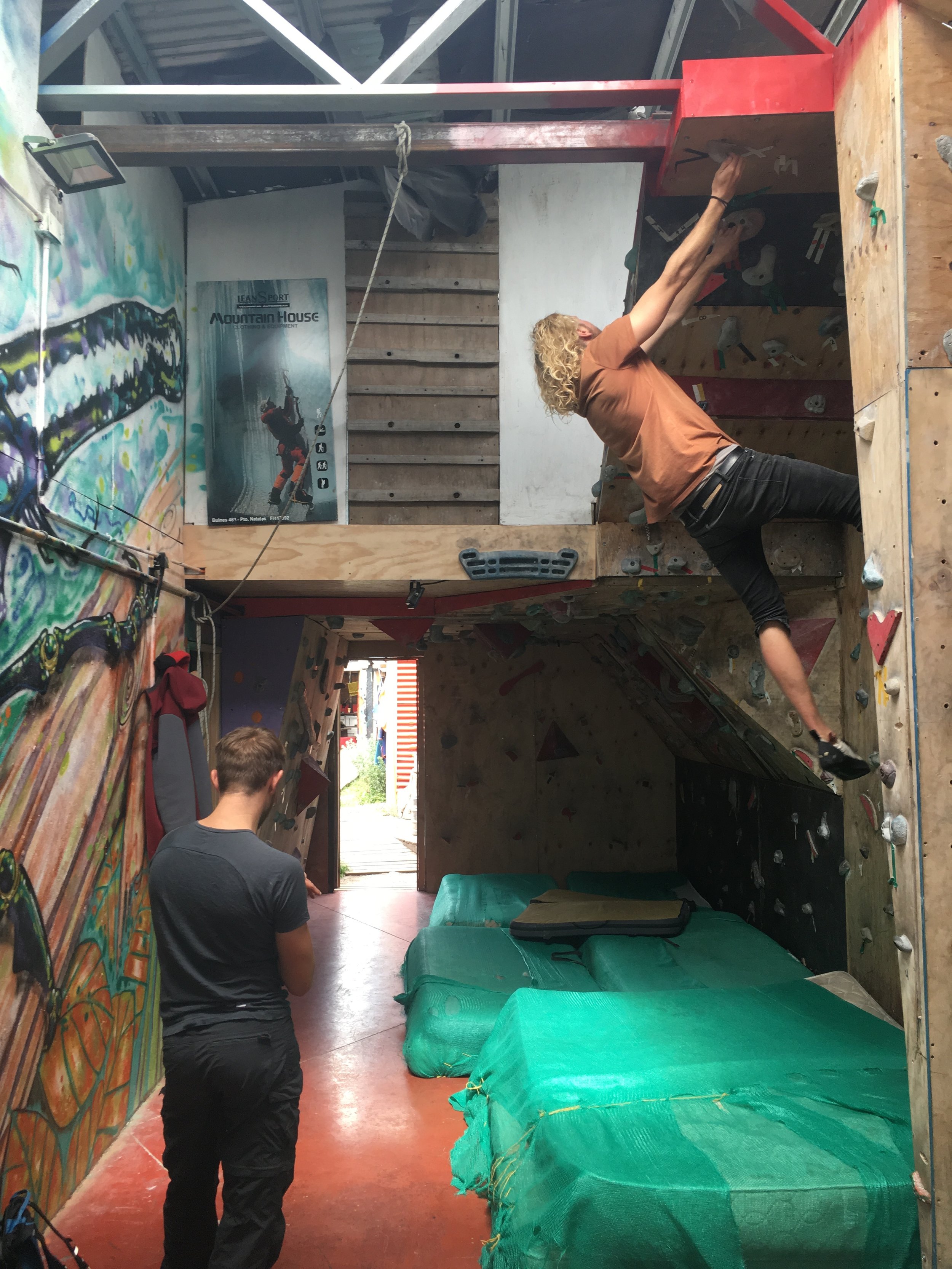
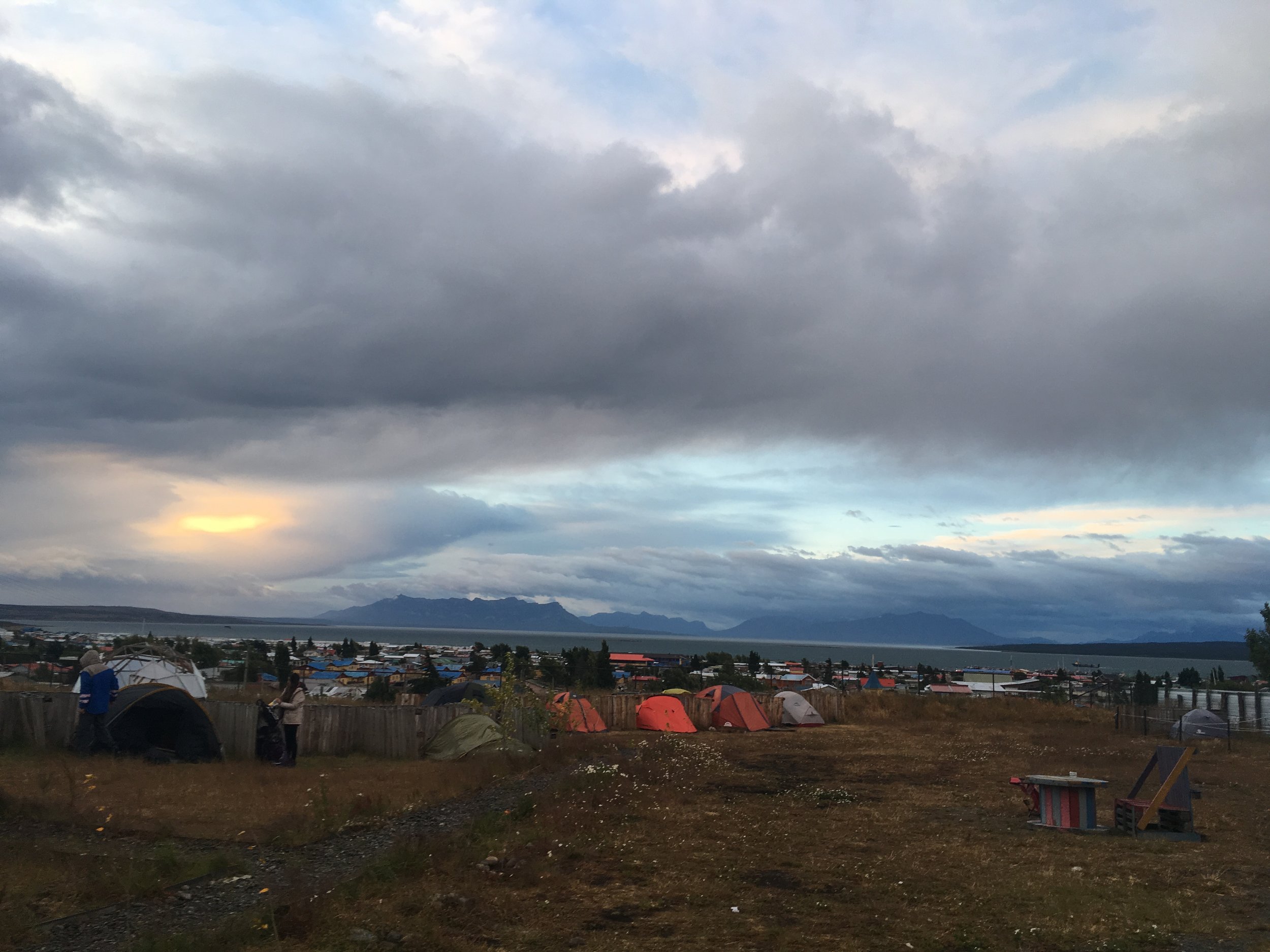
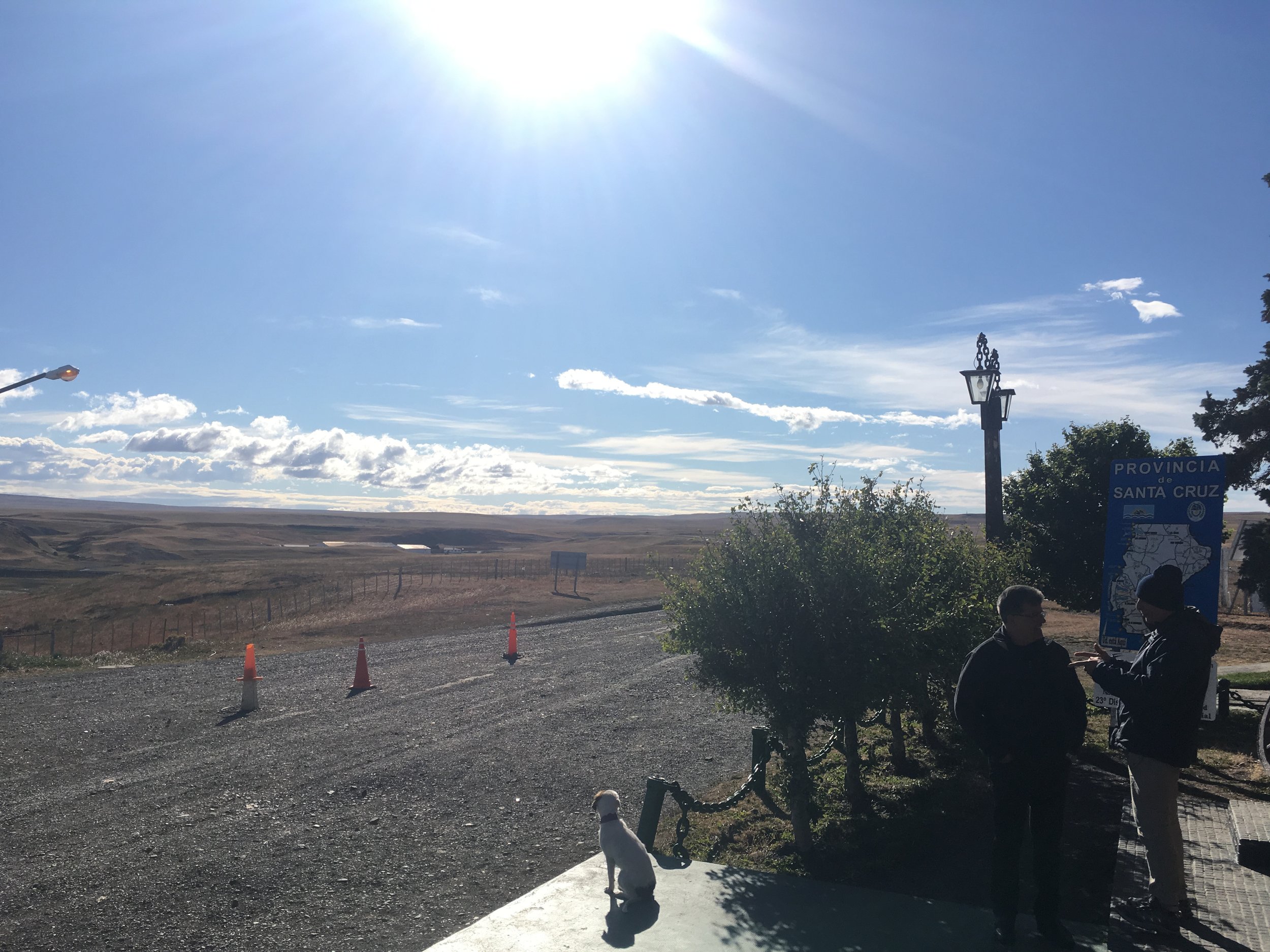
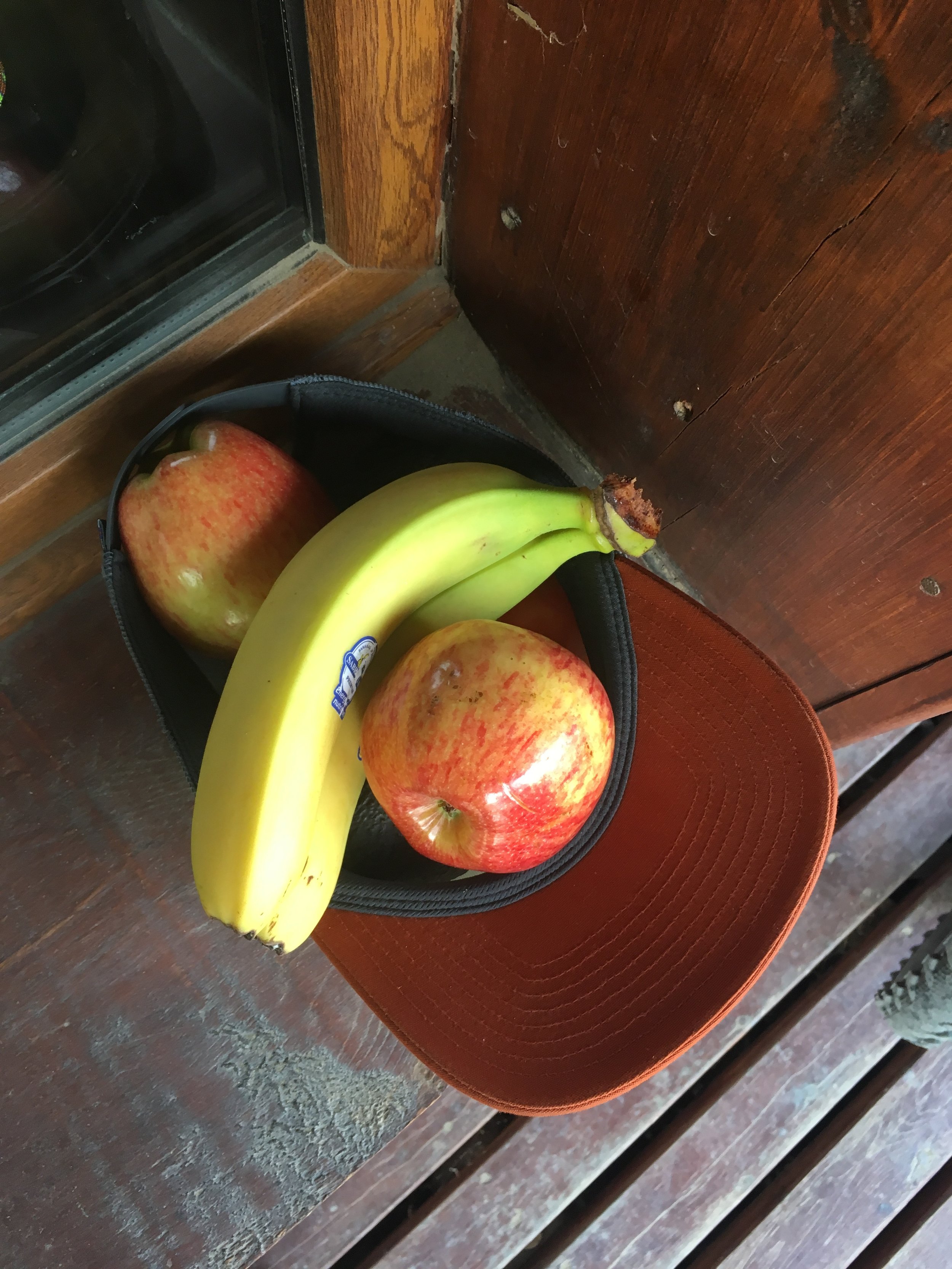
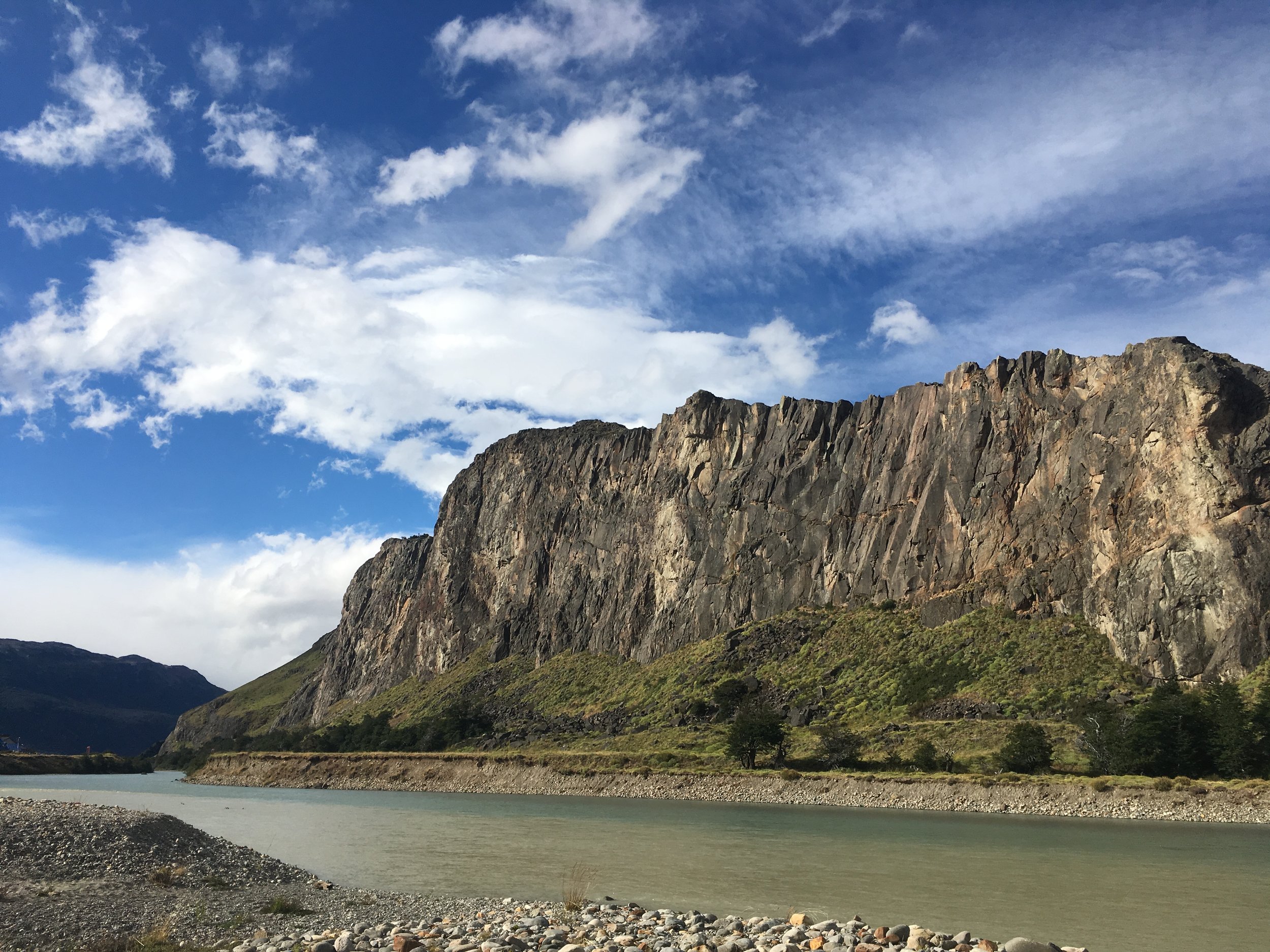
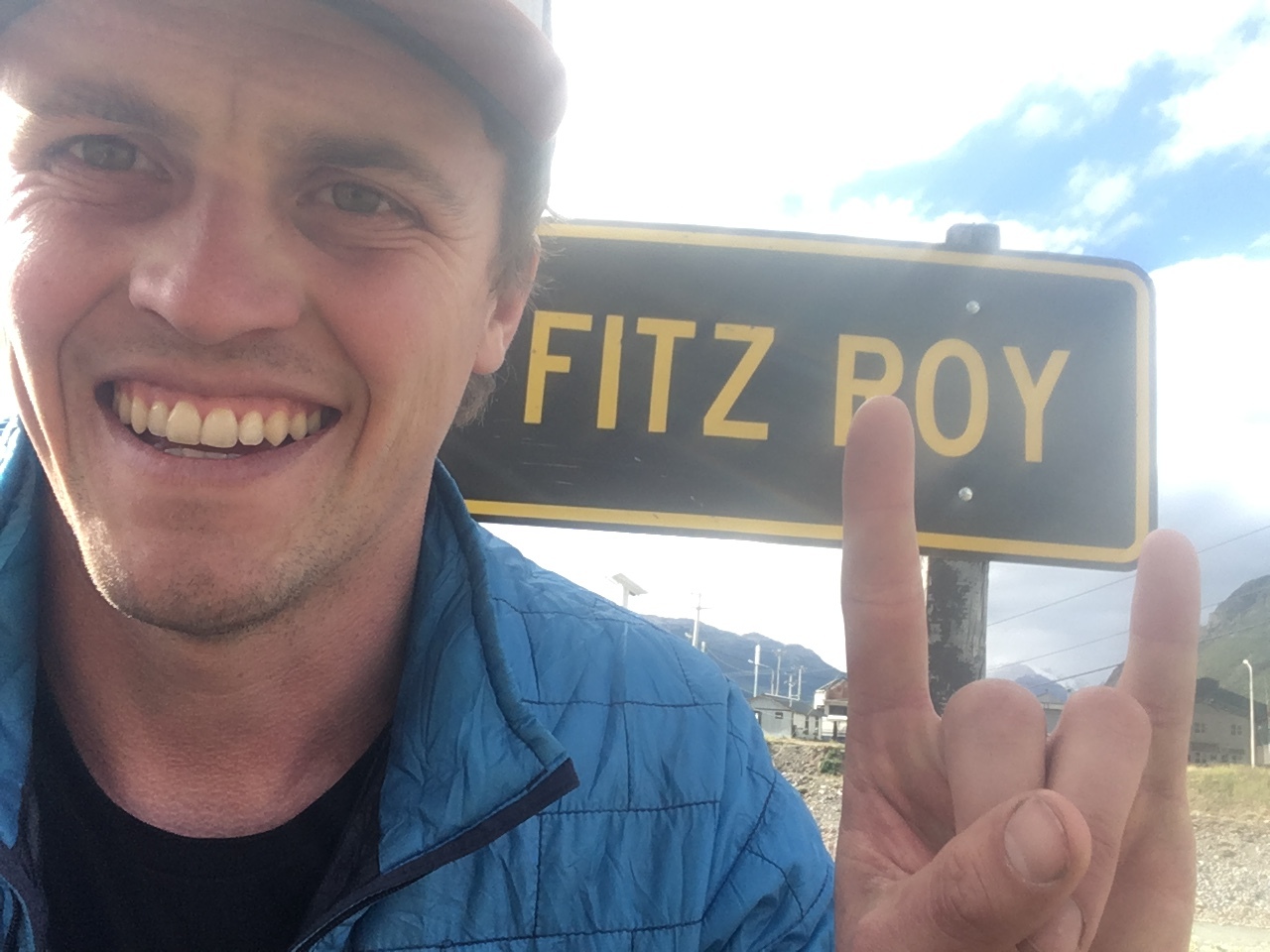

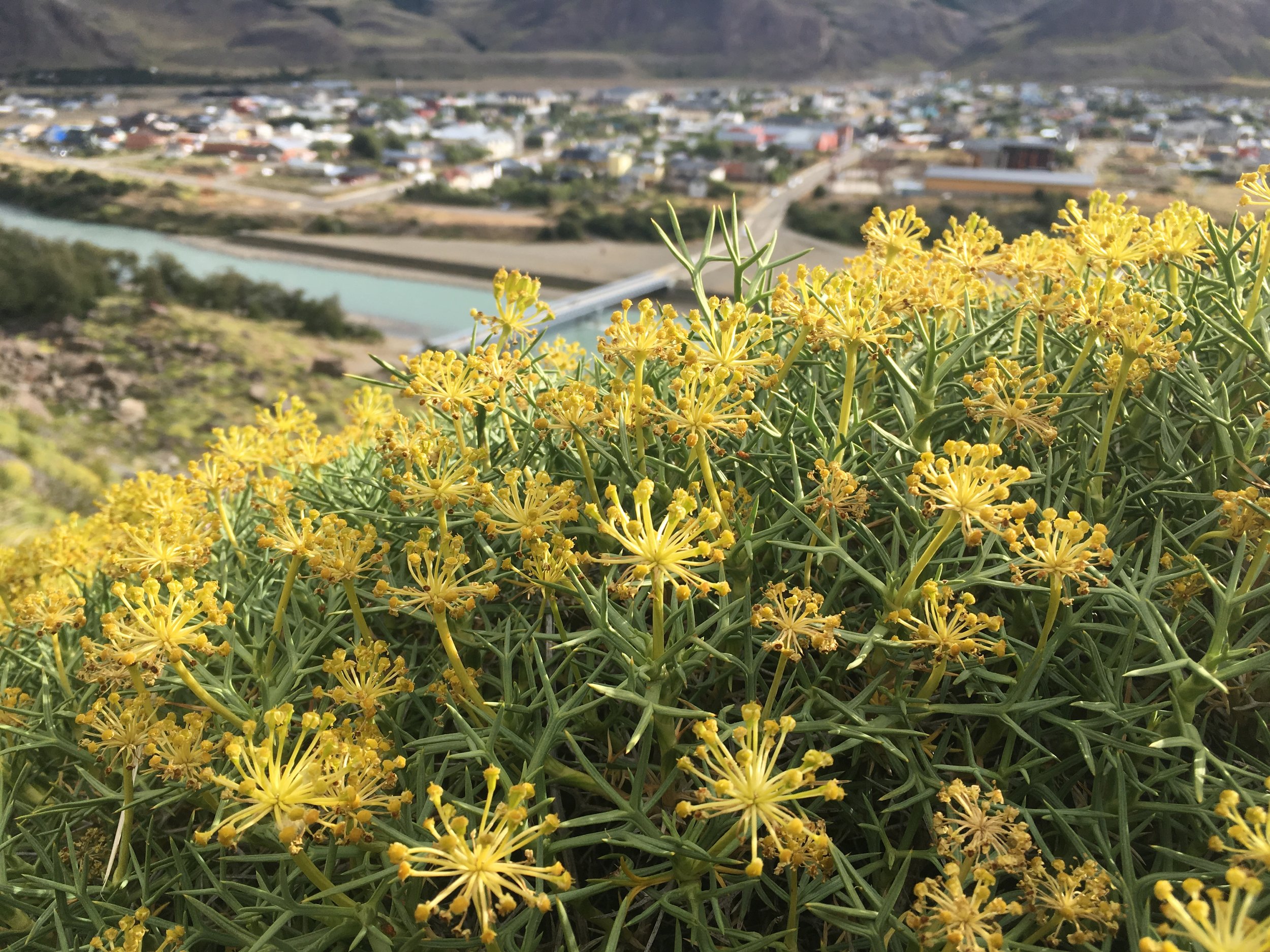
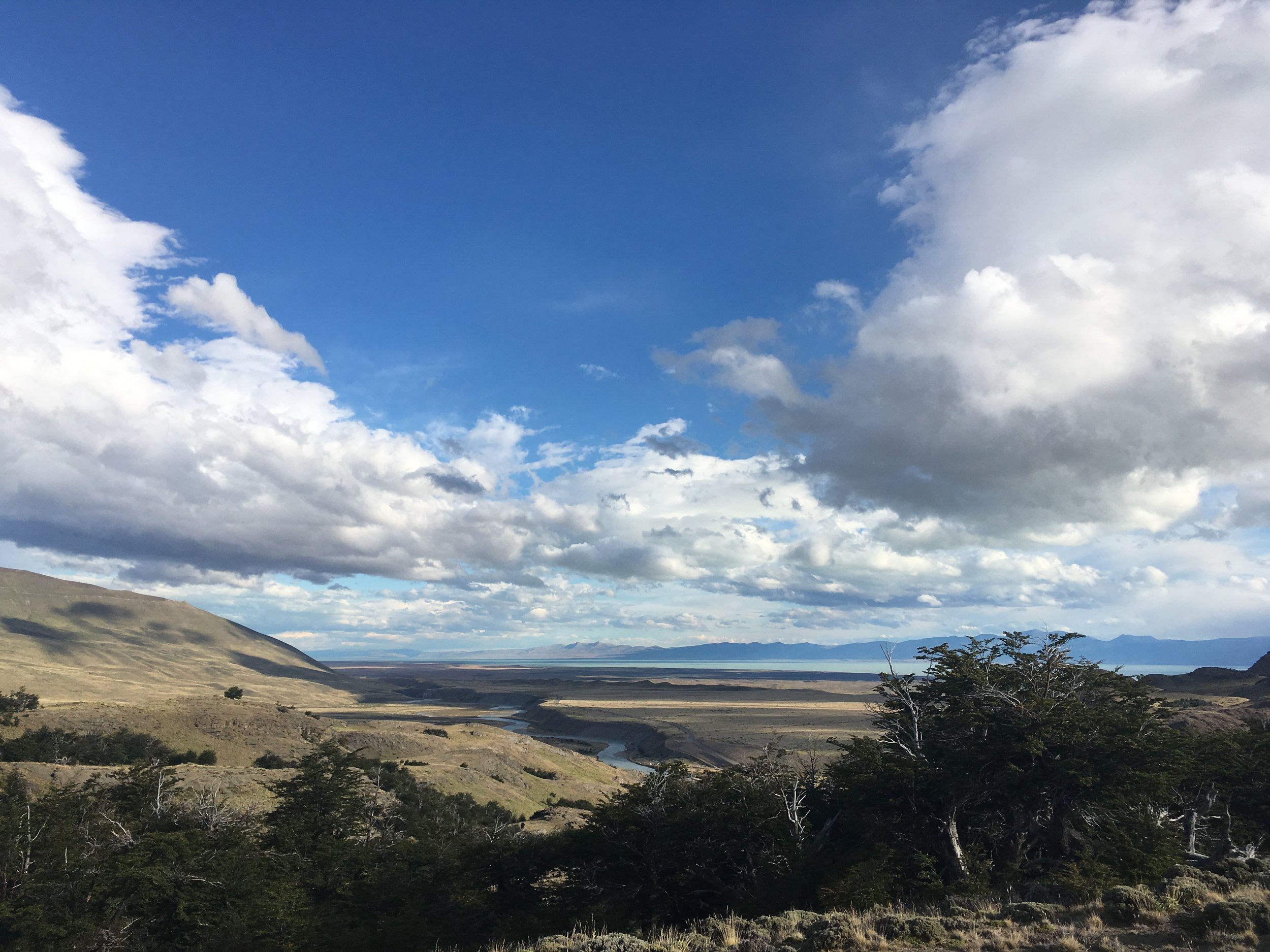
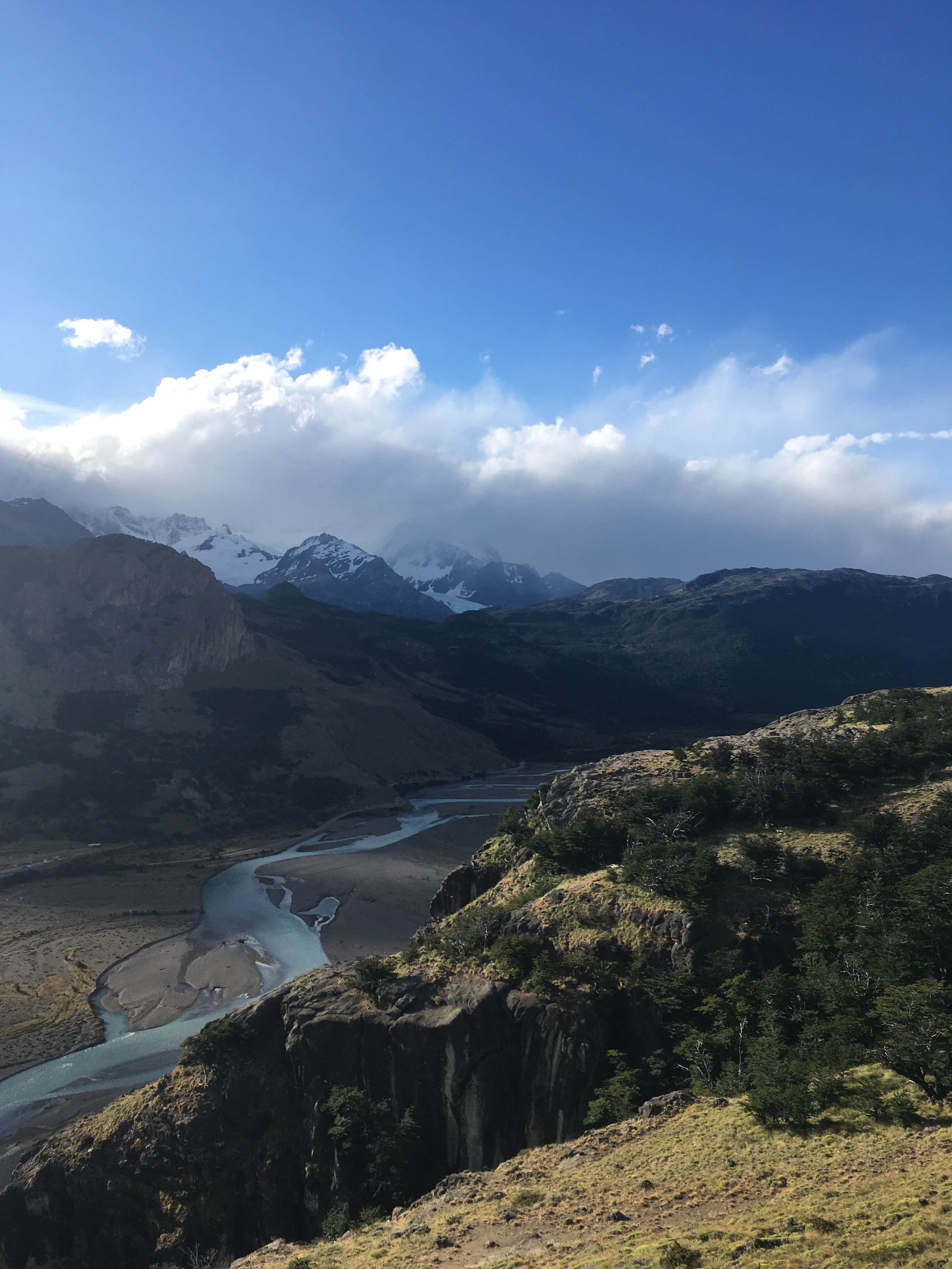


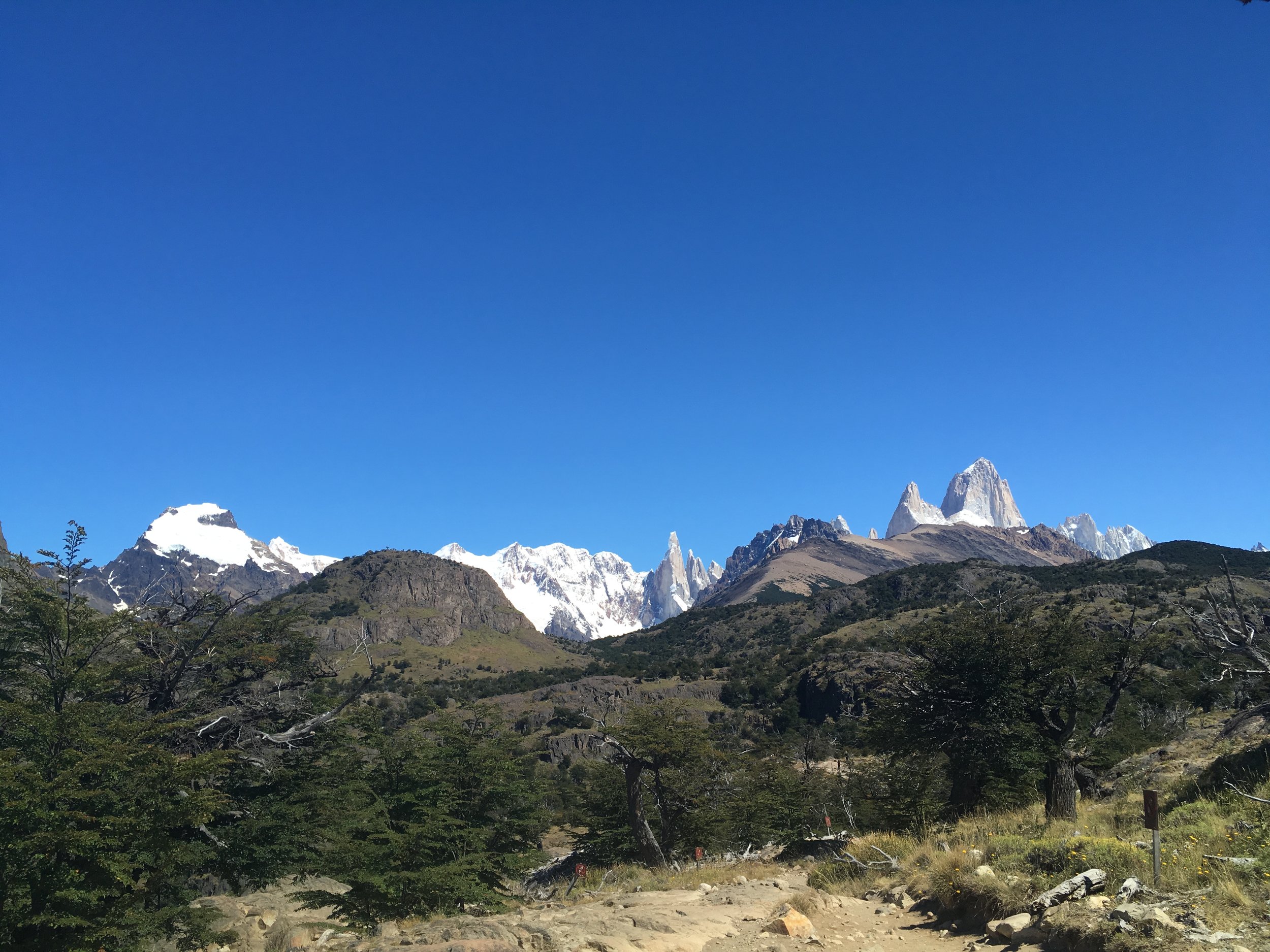


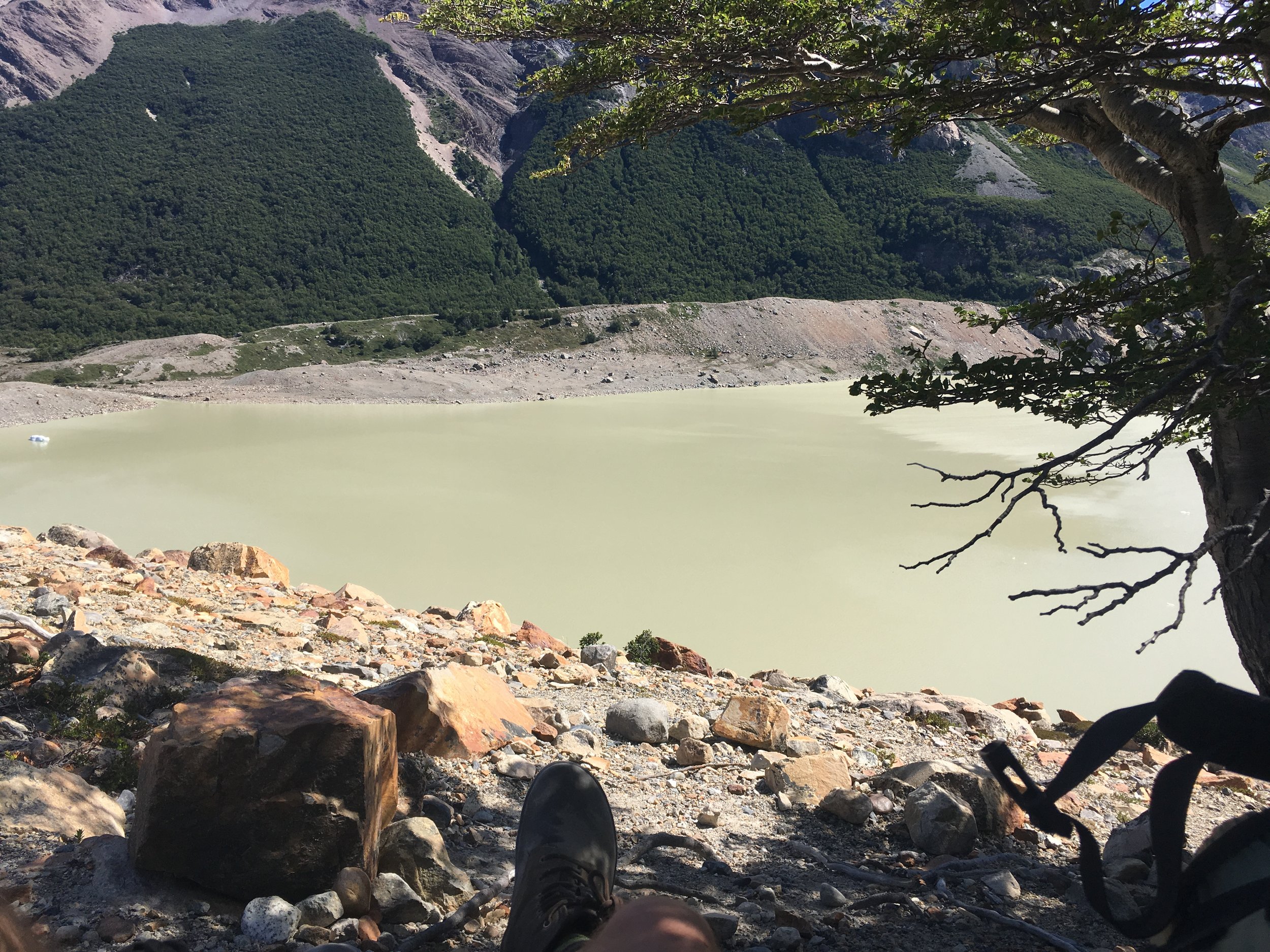
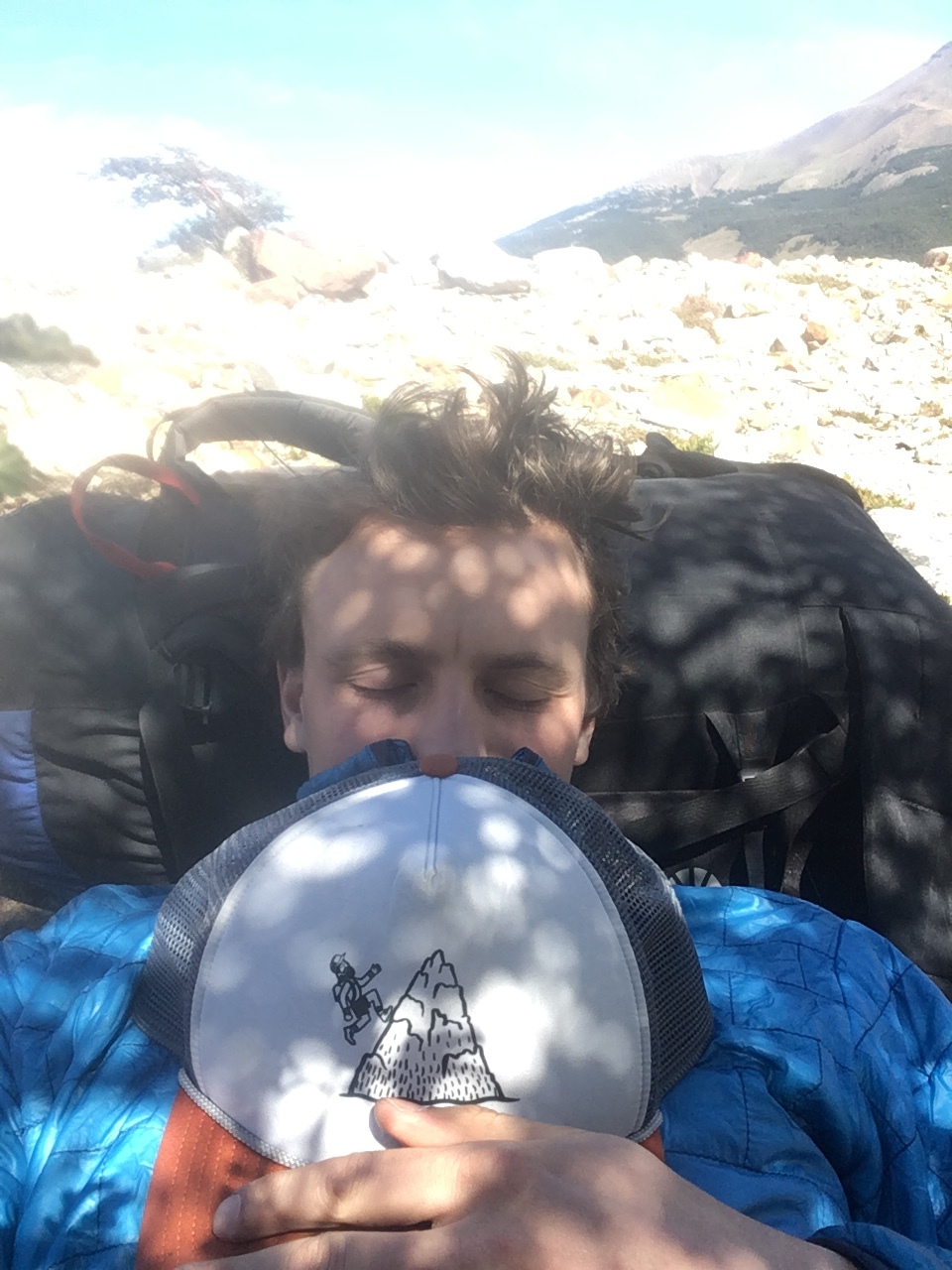
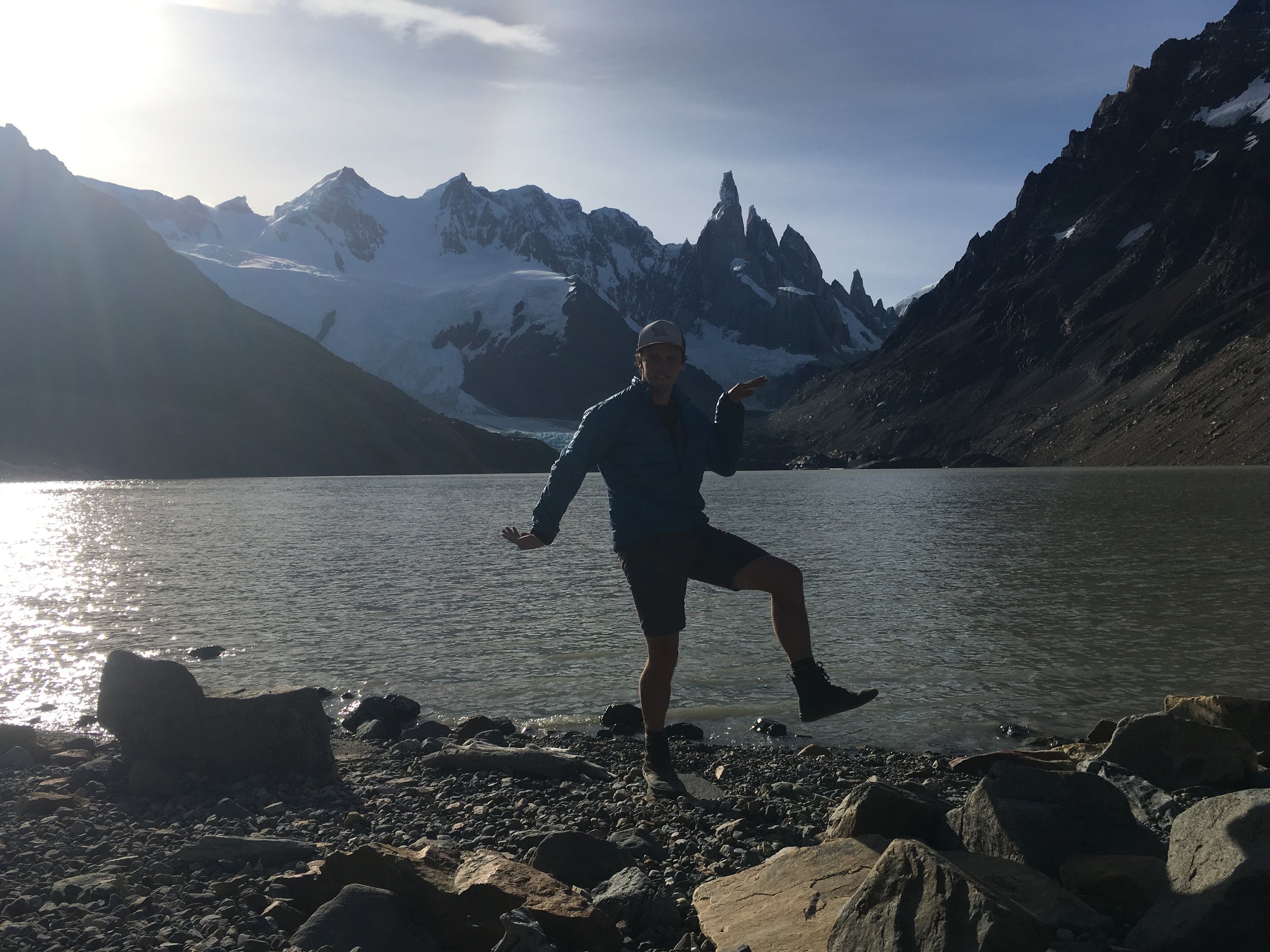

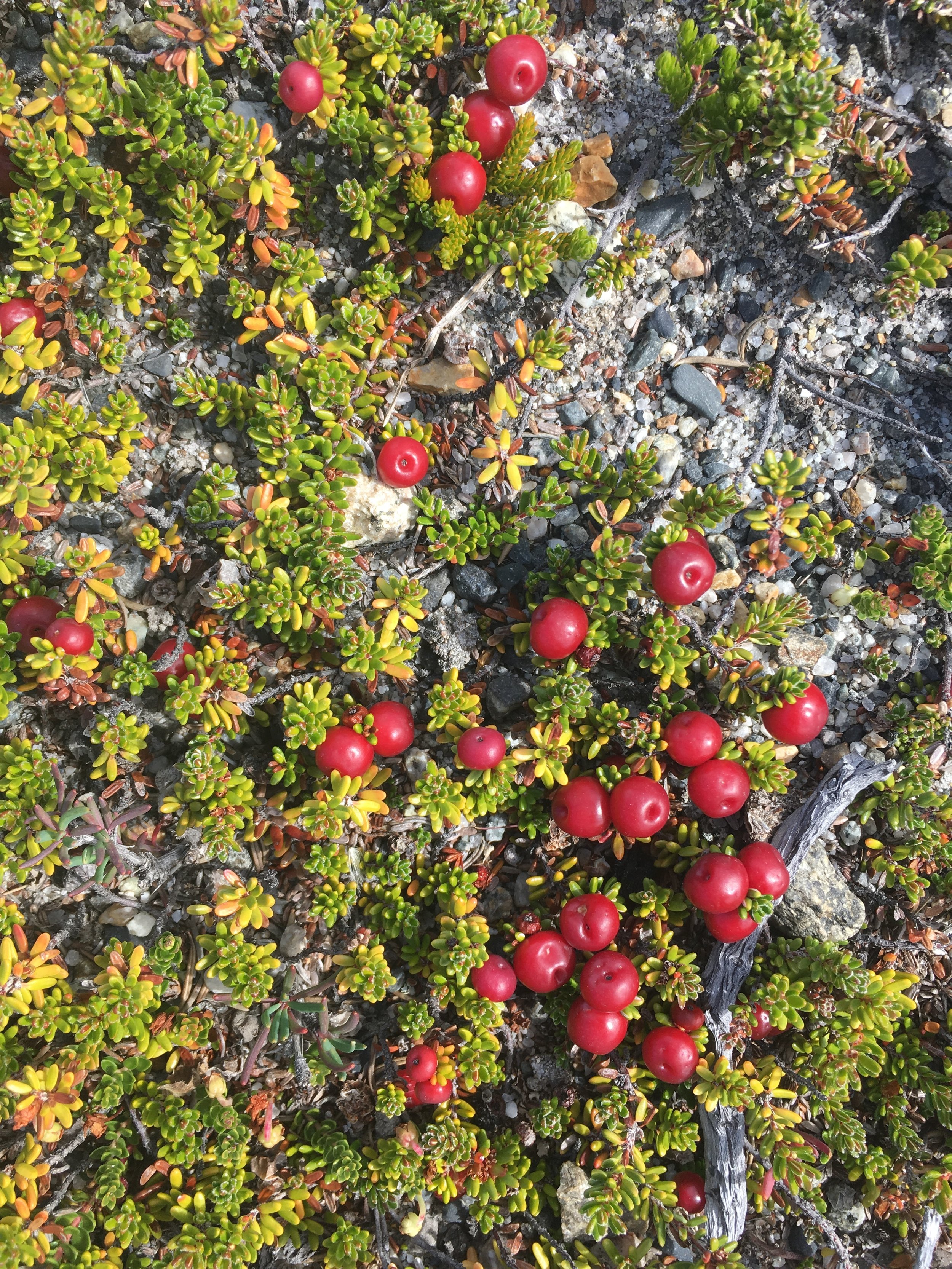
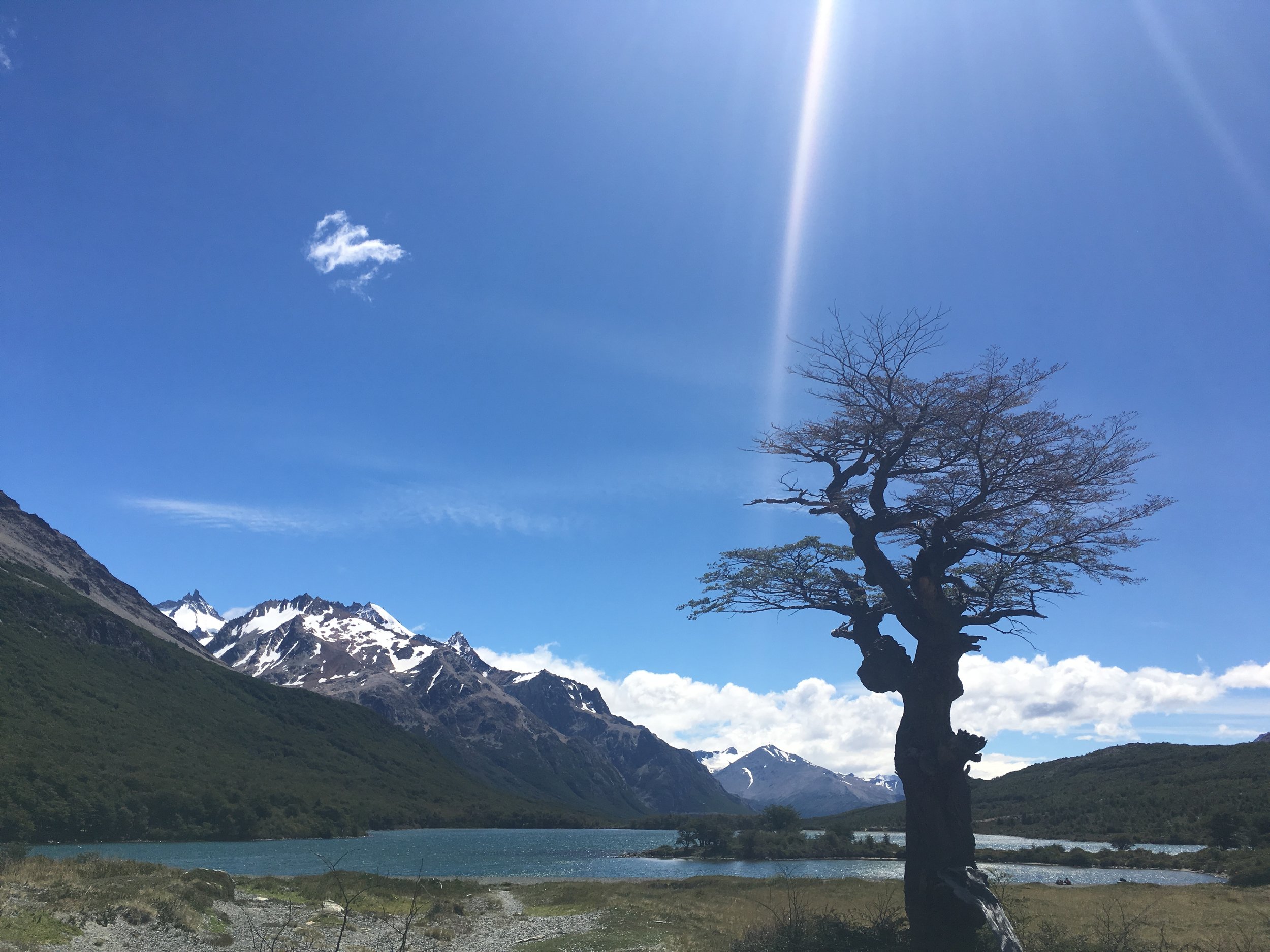
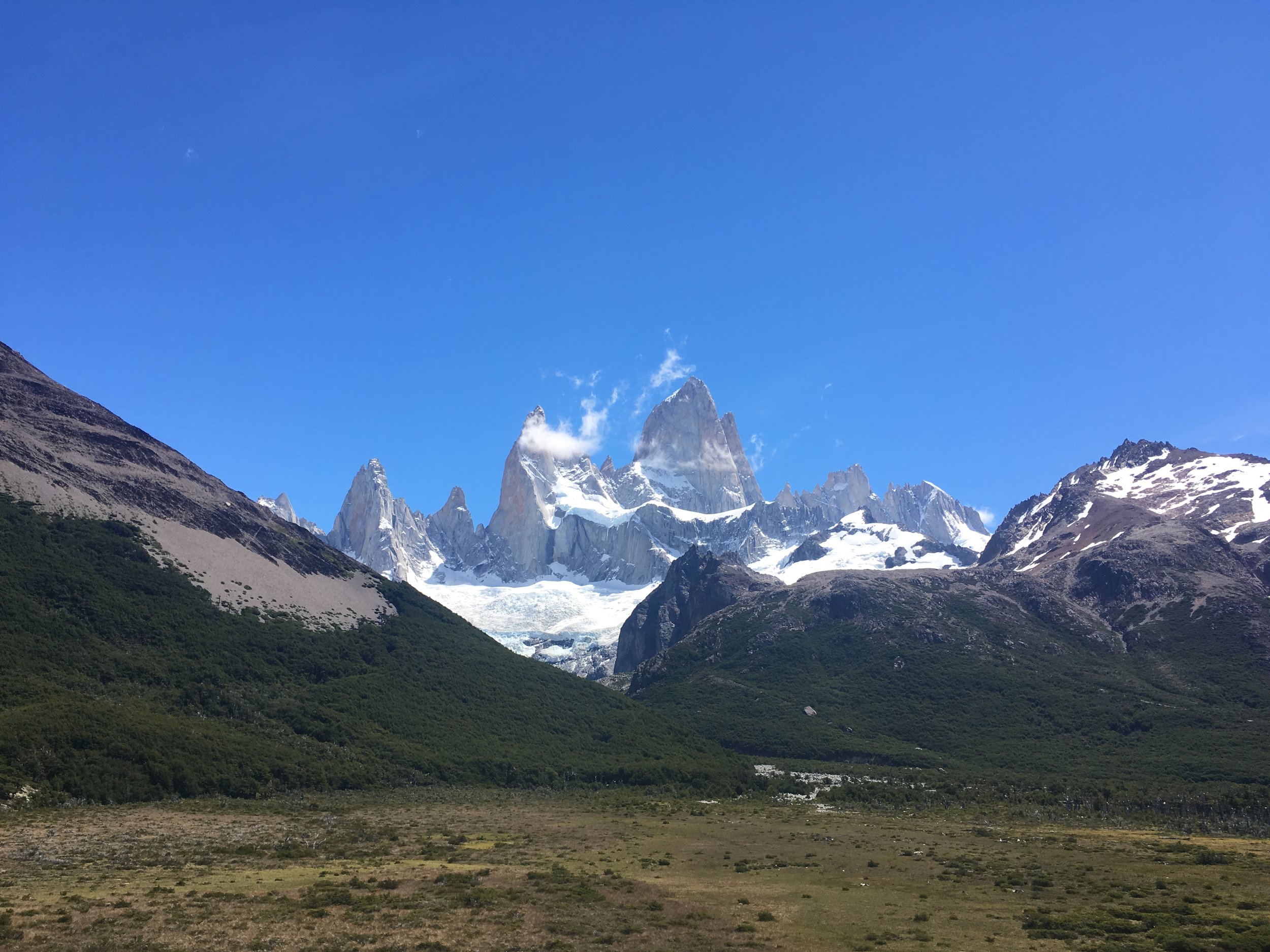
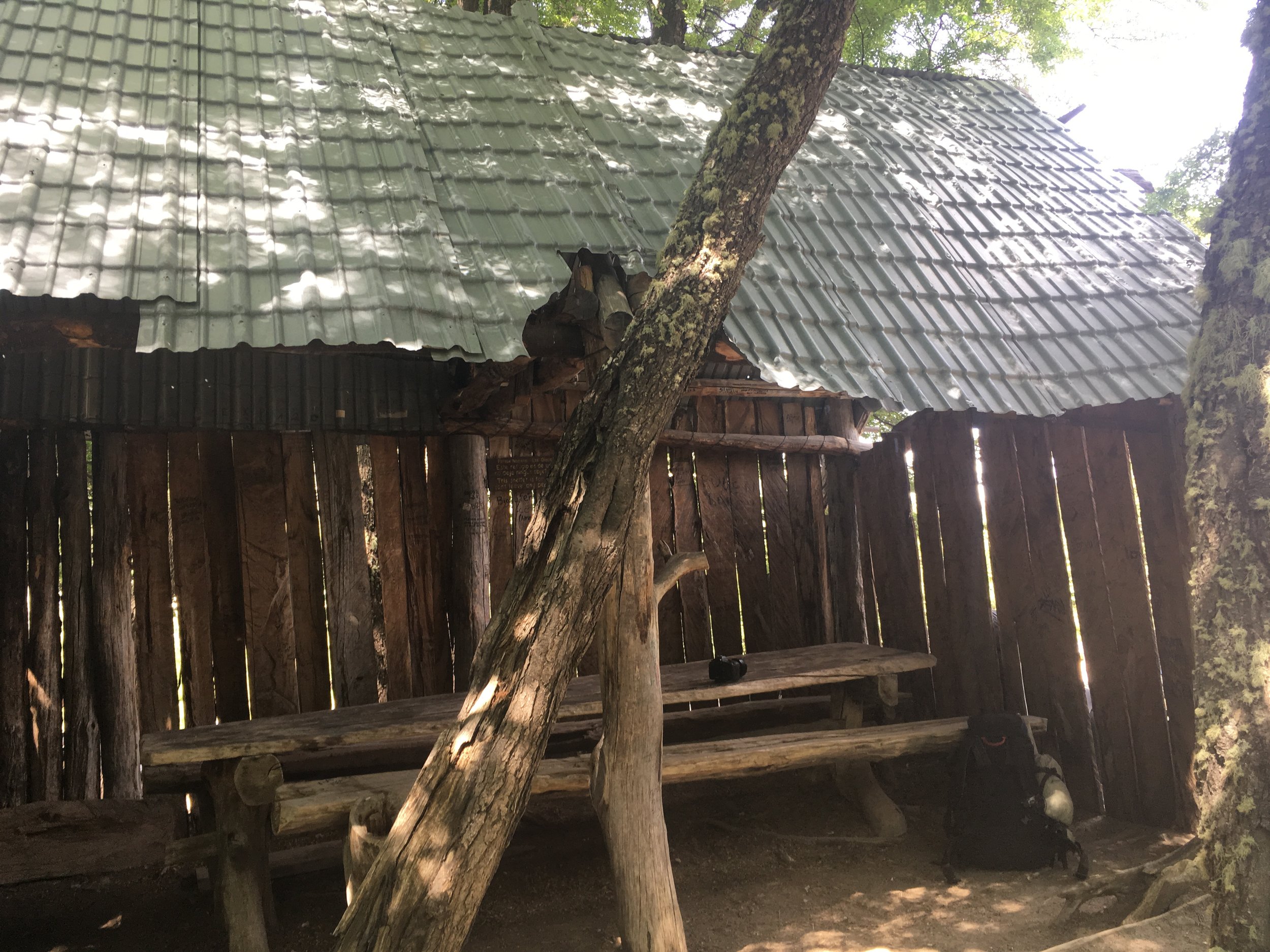

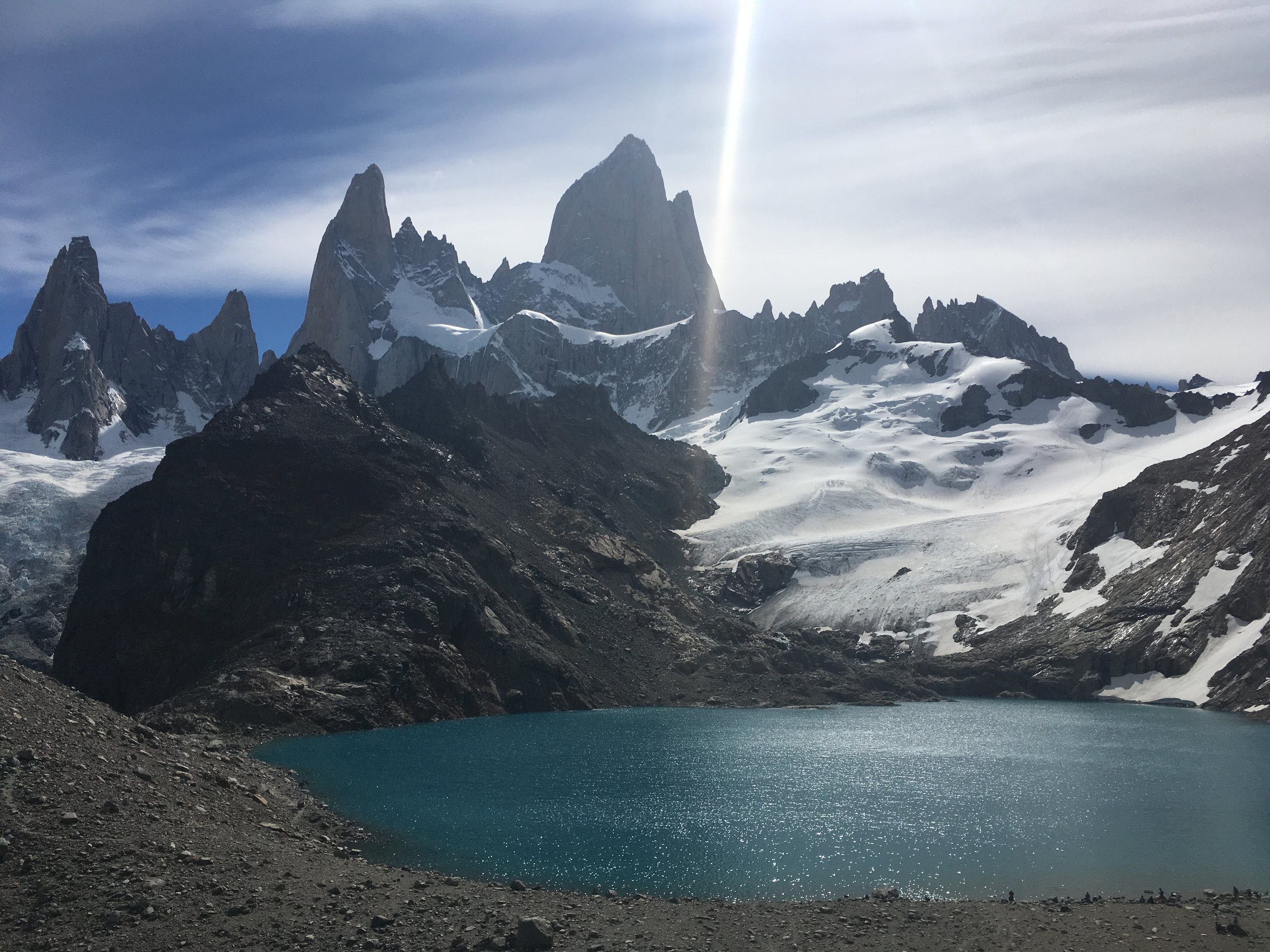
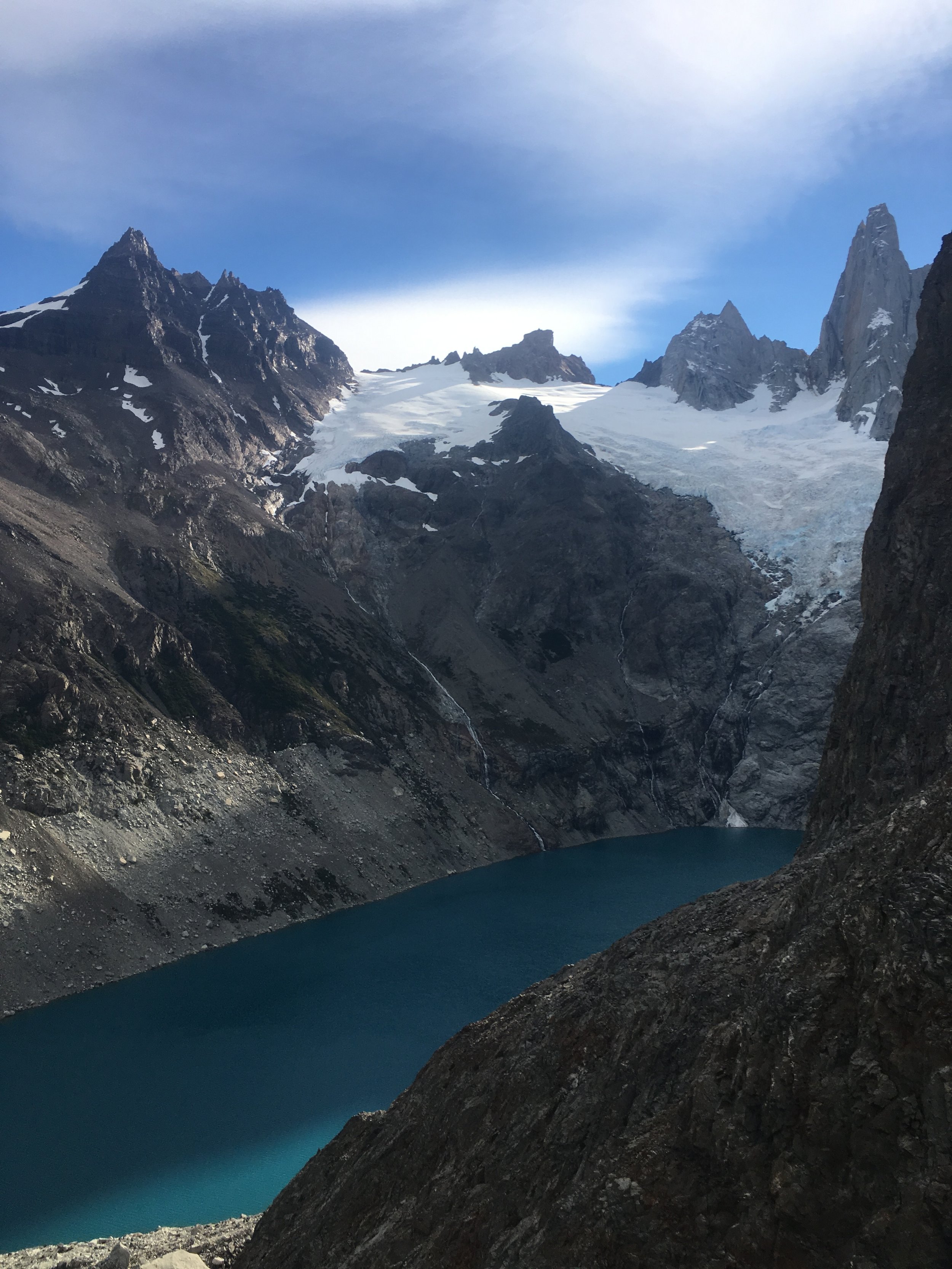

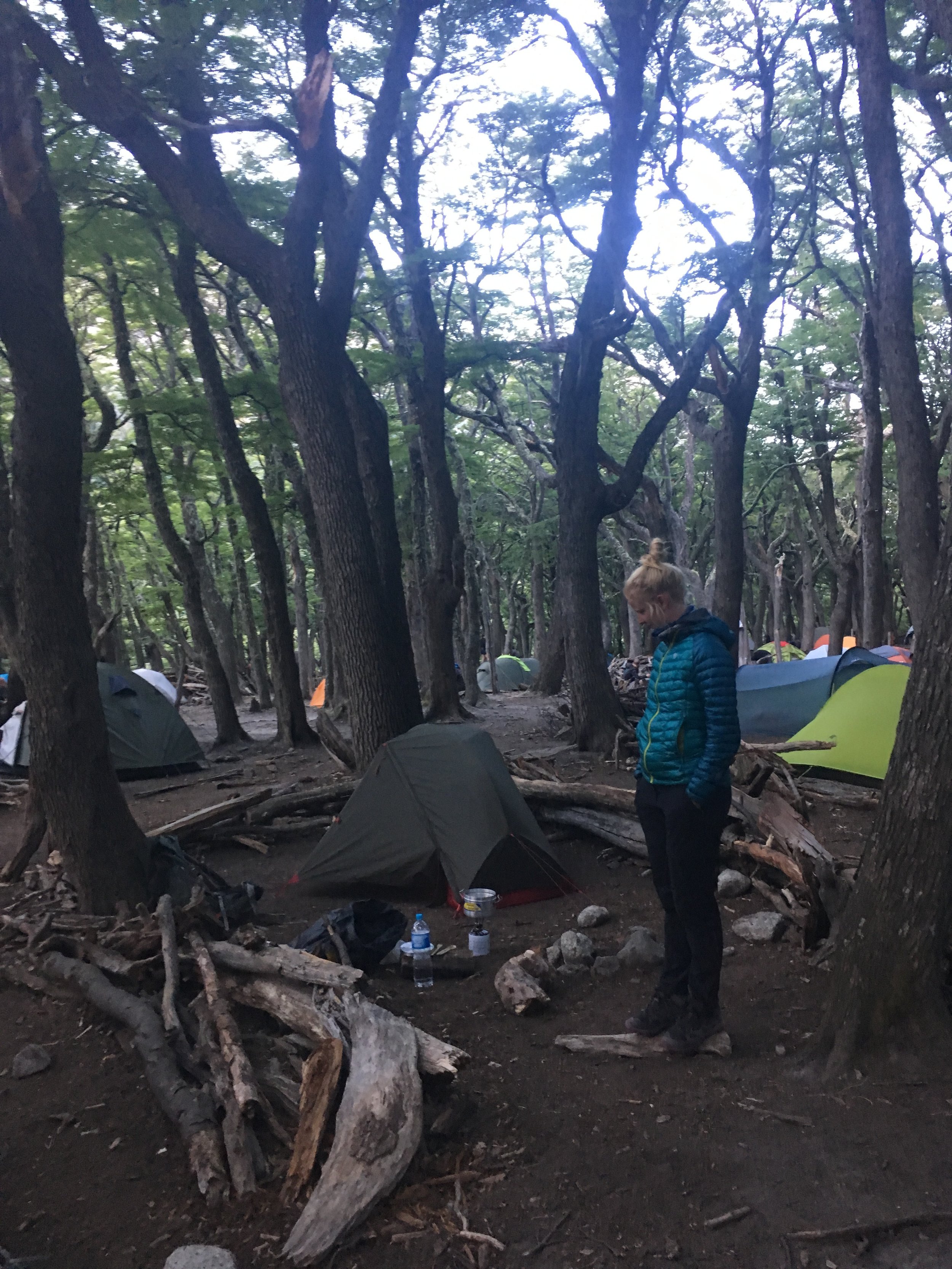
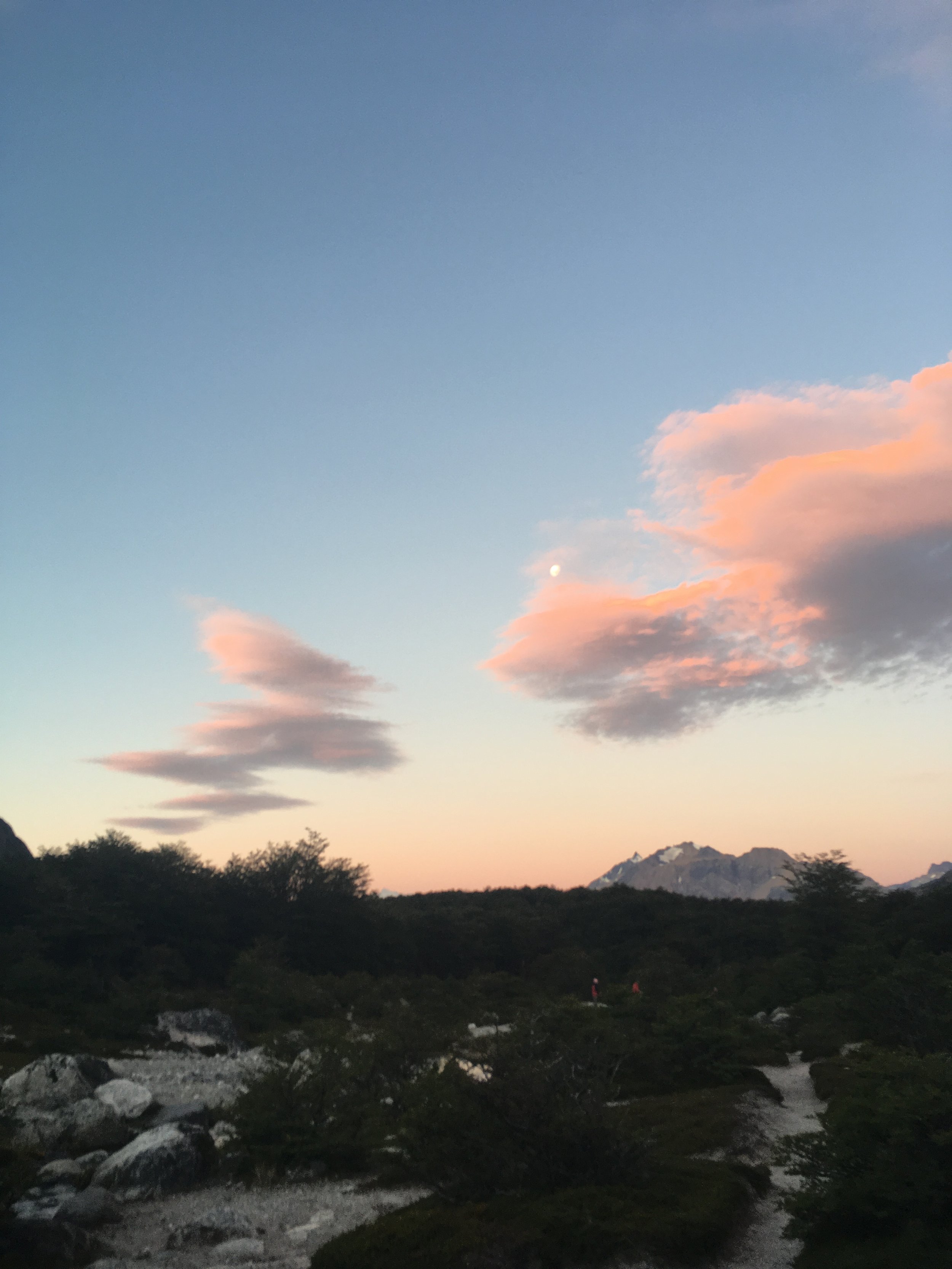
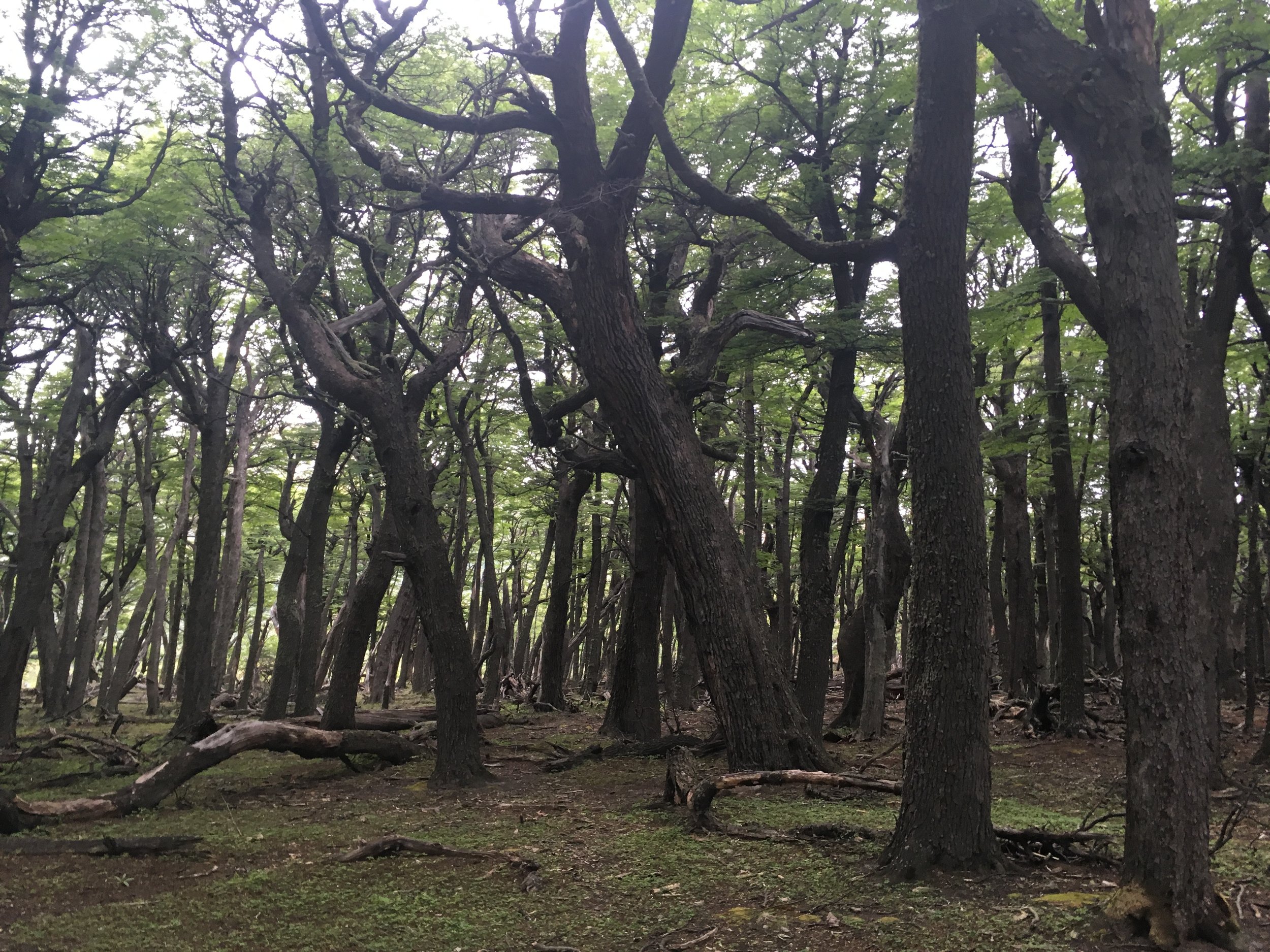
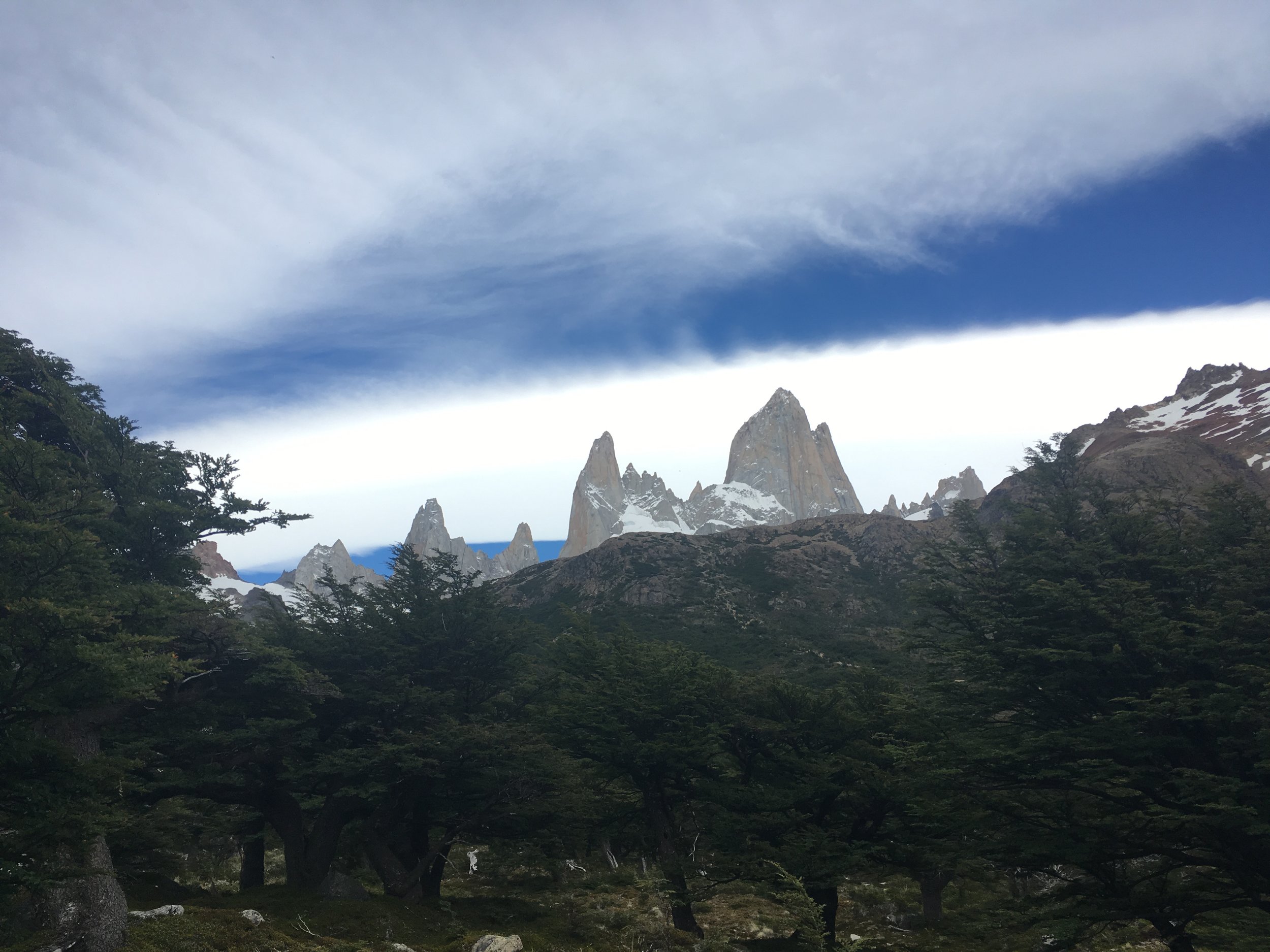
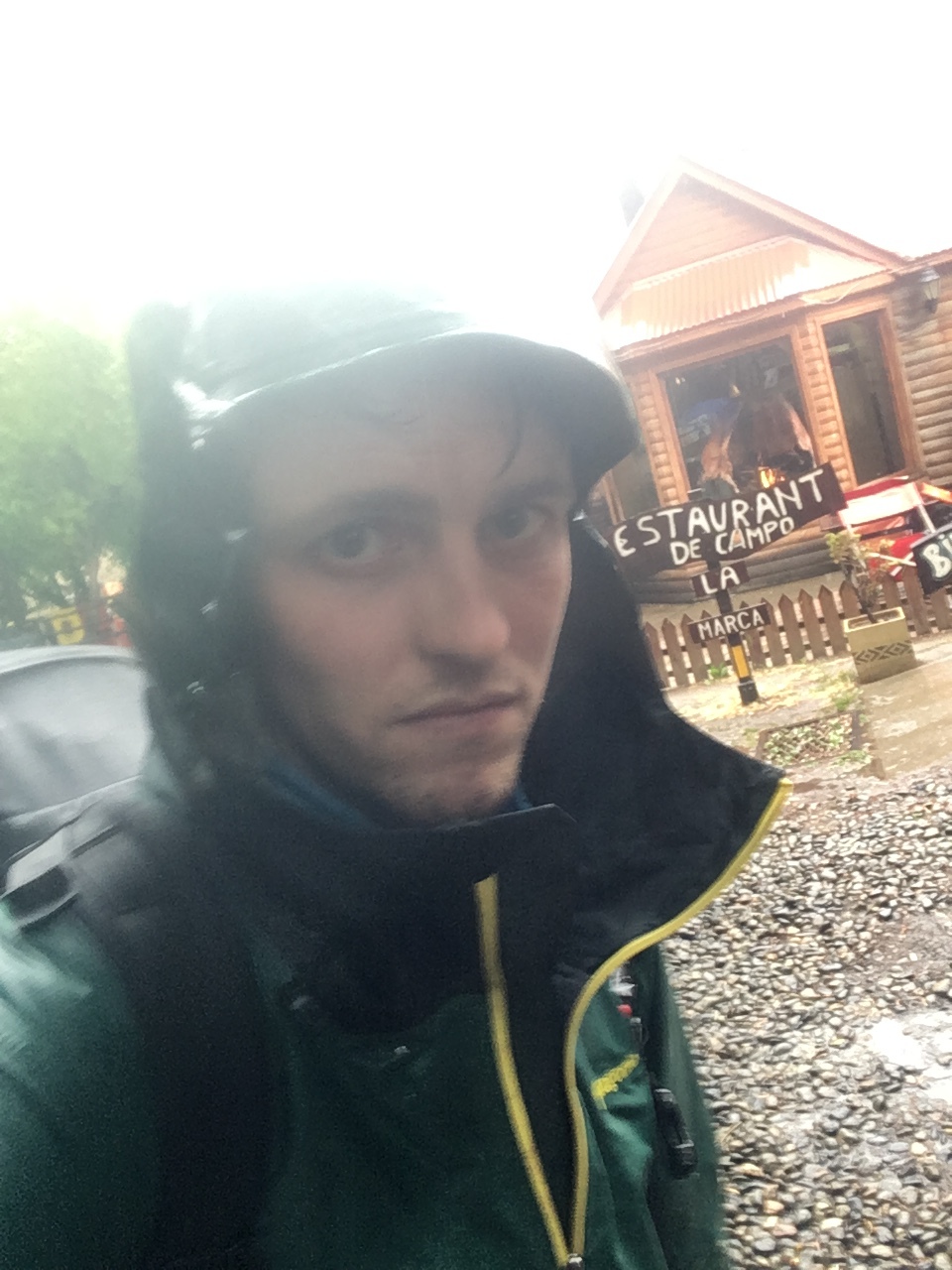
I crossed the river and scrambled up a ridge line on the east side of town to try and get a better view. The mountains remained ensconced by cloud, but the altitude provided an epic rolling vista of Lago Viedma and the surrounding plains bathed in reddish evening light. It was as if the transitions between the Canadian Prairies, Rocky Mountains, and Coast Mountains were all squished into one tiny tract of land. Naturally I got lost on the way down and walked back into the town as the light faded. The tent was pitched at a hostel recommended by Matthias and Katherine (the two hilarious and stereotype destroying German’s I’d met on the bus to El Chalten who’d managed to forget their shoes, backpack and jacket on the previous bus), and as luck would have it I bumped into them later that night. We swapped stories and shared wine.
The next day I woke up for a strong alpine start and got out of the tent at 10am. To my surprise, the royal blue sky was limitless, and soaring all around me and towering over the town rose massive granite massifs. I lost my cool and packed as fast as possible. I planned a day trip with the possibility of an overnight, heading towards Cerro Torre. It was the closest trail and I figured my salami, one apple, piece of cheese, and kilogram of dehydrated mashed potatoes was enough food.
El Chalten enjoys being a hike in, hike out town —I picked the closest trail and went. The trail to Lago Torres, the glacial lake beneath Cerro Torre, is a dusty and relatively mild 9km uphill hike. Winding through old growth Lenga forests the dusty path offers multiple spots to view the granite spires of Cerro Torre and makes it easy to walk slow and enjoy yourself.
Having just left winter back home, my internal clock was a bit off and I arrived six hours too early for sunset… A swim, a nap under a tree, a glorious half jar of sugary peanut butter, and an impromptu meet up with Mathias and Katherine helped me to forget that deep red isn’t the proper colour for legs. We had a good laugh joking about the ‘instagram couples’ around us taking endless selfies, and the sheer scale of the place as it made those far away look incomprehensibly close, yet too tiny, and we nicknamed them the “tiny Patagonia people” (said in a German accent over and over it’s gold).
I set my sneaky grey tent up beside the lake in the lee of a small rocky hump and waited for all the hikers to leave before venturing back out. The evening was spent by myself watching the stars rise over Cerro Torre and listening to pieces of glacial ice pop and crack as it melted in the lake.
I’d heard anecdotal stories about Patagonia and it’s fickle weather; “…this is my fifth time here and the first time I’ve seen the mountains!” “Laguna Torres is the best place to watch sunrise in Patagonia, my friend has been here 27 times…” “the wind never stops…” Yet when my alarm went off at 4am I was still hard pressed to open the tent door. Unimpressed, I considered sleeping in.
Finally, I managed to strike a deal with myself that if I got out of the tent, turned around and looked at Cerro Torre and the view sucked, I could just go back to sleep. I stood up, turned around and let my jaw drop.
After a morning to remember and a breakfast of little red and still unidentified (though highly recommended by an epic middle aged Russian climber) berries, I packed up and headed back down the trail. I’d learned via Maps.me (most travellers seemed to have forgone paper maps, even while in the backcountry —which is weird, because iphones run out of batteries), that there was a connecting trail to the base of Fitz Roy, and that I could make a slow loop of the hike before heading back to town.
I spent the day wandering alone through the lengas, stinking hot, walking slow, admiring alpine lakes and endless views of granite spires. Eventually after a day mostly alone with the caterpillar strewn trail, I reached the start of the walk up Fitz Roy and rejoined the steady stream of international day hikers. On the way I met up a hilarious Aussie named Tianna, and we spent the rest of the afternoon loudly complaining and swearing to each other about the ascent and the heat. Eventually we topped out on the ridge that overlooks Lagoon de los Tres and took in the view of Fitz Roy.
I treated myself, and scared those around me, with a naked dive into the lake. With a bunch of screaming quick dip swimmers around I was feeling fairly tough and Canadian having gone for a proper swim. That was until a man insulated by a massive beard swam past me into the middle of the frigid lake. When he finally came back he informed my astonishment that he was from “Norway.”
Nice one Norway.
I spent the rest of the afternoon with Laura and Axel, a guitar and re-bottled wine packing Argentinian couple who unlike all the brightly coloured, photo snapping internationals around us, sang, smoked and smiled in the sun in a way that spoke to enjoying the moment instead of trying to capture it for later. We hiked down together and descended into the lengas —the long shadow of Fitz Roy extending over the valley as the sun set behind it.
At the campsite I bumped into Joan, a French woman I’d met on a bus. We shared tea by the creek and spent the evening watching shark fin clouds tear over granite and the stars rise above Fitz Roy.
After another quick hello and goodbye, we split ways in the morning and I continued along the valley following the river slowly downwards. Eventually, blister worn, sunburned and hungry, I made it to the gravel road where I sat on my dusty backpack and waited to hitch hike a ride back into town.
The days were winding down and I had to make it back to Punta Arenas in time to catch the flight to King George Island and start a new job in Antarctica.
The next morning I woke up to horizontal rain and winds, stuffed the tent away and walked to the bus stop. The mountains were gone.
It was time to go south.
Fin.

